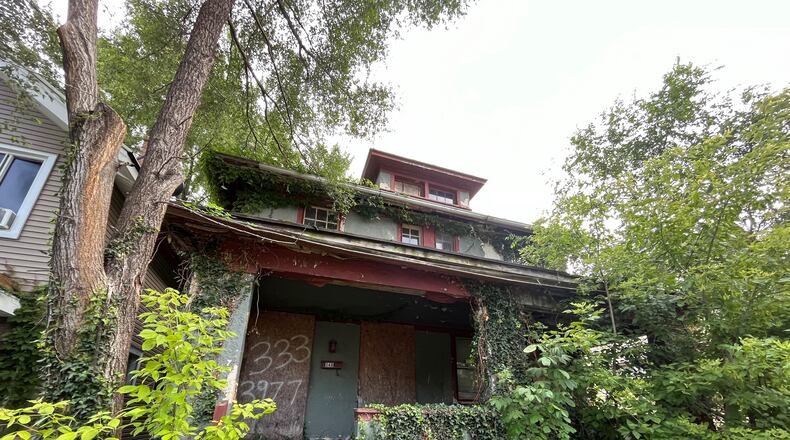The city expects to raze about 670 properties using this funding source, plus another 430 using other federal, state and city money.
“These are significant investments brought to you by the Dayton Recovery Plan,” said Dayton City Manager Shelley Dickstein. “We are very excited about moving these forward — we know it’s a high priority for the community.”
The Dayton City Commission recently approved three contracts for demolition work that will get rid of eyesores in a variety of neighborhoods across the city.
The city’s first round of demo will result in the elimination of 112 structures, each of which will cost between $7,400 to $27,350 to remove, according to city documents.
Alpha Demolition Inc., Charles F. Jergens Construction Inc. and Bladecutter’s Lawn Service will be doing the work, which will include grading and seeding the sites.
The three rounds of demolition are part of the Dayton Recovery Plan, which is the city’s spending plan for its $138 million in federal COVID relief funds.
The city expects to spend about $22 million from multiple funding sources taking down 1,100 nuisance and troubled structures over the next several years.
In the first round, the Edgemont neighborhood will see the most demolition, with 16 properties.
Dayton is eliminating 14 properties in Five Oaks, 13 in Miami Chapel, 11 in MacFarlane and Southern Dayton View and 10 in Old North Dayton.
The plan includes demolishing nine structures in Twin Towers, seven in Wolf Creek, six in Fairview, five in Santa Clara, three in Riverdale, one in Old Dayton View and a few in Carillon, Hillcrest and McCook.
“We are coordinating demolition in neighborhoods where other Dayton Recovery Plan efforts are occurring so that we can leverage and maximize all sources toward having the greatest impact in these areas and adjoining spaces as well,” Steve Gondol, Dayton’s deputy director of planning, neighborhoods and development said in a prepared statement.
Some of these structures have been empty and deteriorating for years, and neighbors have said removing the blight on their streets will make a big difference for neighborhood aesthetics and quality of life.
Vacant and abandoned properties attract vandalism, illegal dumping, squatters and criminal activities including drug use and sales and prostitution.
The streets with the most properties slated for demo include Kenwood Avenue in the Five Oaks neighborhood.
Five structures will be bulldozed on that street, including four that are on the same block. A couple of the homes are barely visible from the street, because the yards have so much overgrowth and vegetation.
Randolph Street in Miami Chapel has four properties that are coming down, while several properties will be razed on Danner, Norman, Euclid, Richmond, Fairview, Paul Laurence Dunbar, Main and Second streets.
About the Author



